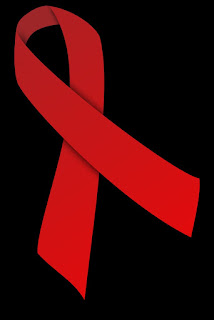AIDS
The human immunodeficiency virus (HIV) causes acquired immunodeficiency syndrome (AIDS), a chronic, sometimes fatal disease (HIV). HIV impairs your body's capacity to fight infection and illness by destroying your immune system. HIV is a sexually transmitted illness that affects both men and women (STI). It can also be passed from mother to child during pregnancy, delivery, or breastfeeding by contact with contaminated blood. It might take years without medicine for HIV to damage your immune system to the point where you develop AIDS. Although there is no cure for HIV/AIDS, drugs can significantly decrease the disease's course. In many wealthy countries, these medications have lowered AIDS fatalities. Infection with the human immunodeficiency virus (HIV) and acquired immunodeficiency syndrome (HIV/AIDS) is a group of diseases caused by the retrovirus human immunodeficiency virus (HIV). Following the first infection, a person may suffer no symptoms or a brief period of influenza-like sickness. This is usually followed by a long period of incubation with no symptoms. As the infection continues, it wreaks havoc on the immune system, raising the risk of common illnesses like TB, as well as other opportunistic infections and malignancies that are typically uncommon in persons with healthy immune systems.
Two people have been claimed to be cured of AIDS, dubbed the Berlin Patient and the London Patient, and the National Institutes of Health and the Gates Foundation have offered $200 million to find a universal cure. Antiretroviral therapy can delay the progression of the disease and lead to a near-normal life expectancy, despite the fact that there is no widely accessible cure or vaccine. As soon as the diagnosis is determined, treatment is suggested. The average survival duration after infection is 11 years without therapy. Around 37 million individuals worldwide were living with HIV in 2020, with 680,000 fatalities that year. Eastern and southern Africa are home to an estimated 20.6 million of these people. Between the discovery of AIDS (in the early 1980s) and the year 2020.
HIV (human immunodeficiency virus) is a virus that affects cells in the body that help it fight infections, leaving a person more susceptible to other infections and illnesses. It is disseminated by coming into touch with a person who has HIV's body fluids. AIDS is a late stage of HIV infection in which the body's immune system has been severely harmed by the virus. Most patients with HIV in the United States do not acquire AIDS because they take their HIV medication on a daily basis as directed.
Symptoms: HIV and AIDS symptoms vary depending on the stage of infection. Primary infection (Acute HIV): Within two to four weeks of the virus entering the body, some persons infected with HIV have a flu-like sickness. Primary (acute) HIV infection is a short-term sickness that might last a few weeks. The following are examples of possible indications and symptoms:
1. Fever
2. Headache
3. Rash, muscle pains, and joint discomfort
4. Painful oral sores and a sore throat
5. Lymph glands are swollen, mostly in the neck
6. Diarrhea
7. Loss of weight
8. Cough
9. Sweats at night
You might not even notice these symptoms since they are so minor. The amount of virus in your bloodstream (viral load) is, however, rather high right now. Most persons with HIV in the United States now do not get AIDS as a result of improved antiviral therapy. HIV usually progresses to AIDS in 8 to 10 years if left untreated. When you get AIDS, your immune system is seriously harmed. You'll be more susceptible to opportunistic infections and malignancies, which are illnesses that would not normally cause sickness in someone with a sound immune system.
People may have the following experiences:
1. Areas of discomfort: the abdomen
2. Suffering from pain when swallowing is a possibility.
3. Cough: it might be wet or dry.
4. Fatigue, fever, lack of appetite, malaise, nocturnal sweats, or excessive perspiration affect the entire body.
5. Nausea, prolonged diarrhea, vomiting, or watery diarrhea are gastrointestinal symptoms.
6. Throat: pain or trouble swallowing
7. Sores or swelling in the groin
8. Ulcers in the mouth or a white tongue
9. Opportunistic infection, headache, oral thrush (mouth thrush), pneumonia, red blotches, significant accidental weight loss, skin rash, or enlarged lymph nodes are all typical side effects.
Every year on December 1st, World AIDS Day is commemorated. It's a chance for people all around the globe to come together in the fight against HIV, to express solidarity for HIV-positive people, and to remember those who have died as a result of an AIDS-related illness. World AIDS Day was the first global health day, established in 1988.
Diagnosis:
The most frequent technique to diagnose HIV is through blood testing. These tests check for antibodies to the virus that the body produces in an effort to combat it. People who have been exposed to the virus should get tested right once, since developing antibodies to the virus can take anywhere from six weeks to a year. Antigen/antibody testing is performed. Typically, these tests entail taking blood from a vein. Antigens are components of the HIV virus that are generally detected in the blood — a positive test — after a few weeks of HIV contact. When your immune system is exposed to HIV, it produces antibodies. Antibodies might take weeks or months to become detectable. It might take two to six weeks for the combined antigen/antibody tests to turn positive following exposure. Antibody testing is performed. Antibodies to HIV are looked for in blood or saliva in these tests. The majority of quick HIV tests, including at-home self-tests, are antibody tests. Antibody testing might take three to twelve weeks to go positive after you've been exposed. Tests on nucleic acids (NATs). These tests seek for the virus itself in your body.
AIDS is caused by HIV, which impairs the body's capacity to fight infections. Contact with contaminated blood, sperm, or vaginal secretions can transfer the virus. Flu-like symptoms such as fever, sore throat, and exhaustion can appear within a few weeks following HIV infection. Then, until it evolves to AIDS, the condition is typically asymptomatic. Weight loss, fever or night sweats, weariness, and repeated infections are among the signs of AIDS. Although there is no cure for AIDS, meticulous adherence to antiretroviral (ARV) regimens can significantly decrease the disease's progression and avoid secondary infections and consequences.
Although there is no cure for HIV, antiretroviral therapy can manage the infection, allowing HIV patients to enjoy long and healthy lives. The majority of research is focused on finding a functional cure for HIV, in which the virus is permanently lowered to undetectable and harmless levels in the body, but some virus remains. Although there is no cure for AIDS, meticulous adherence to antiretroviral (ARV) regimens can significantly decrease the disease's progression and avoid secondary infections and consequences.








